The top coffee in the world is produced in this way.
Coffee is produced all over the world. The coffee produced in some areas is of superior quality and enjoys a good reputation. It usually stems from its low yield and excellent taste, including Blue Mountains in Jamaica, KONA in Hawaii, and Peaberry in Tanzania. This kind of coffee is expensive because of its high quality and rarity.
However, there is one kind of coffee that beats the so-called top coffee listed above with its unique taste, rarity, and strange production process. The coffee, known as KOPI LUWAK (also known as Sumatran civet coffee, KOPI Indonesian, coffee, LUWAK Indonesian, Ruwak civet), produces only about 500lb a year and is precious because it is scarce. The price of KOPI LUWAK is $300a pound. The price may reflect its rare characteristics, while its "production" process can be described as "rare". LUWAK coffee is as expensive as gold and silver is not an infinite scenery on a fake island, but because of how it is produced.
OK, let's take a look at the production process of KOPI LUWAK coffee:
The iconic manual picking of top coffee
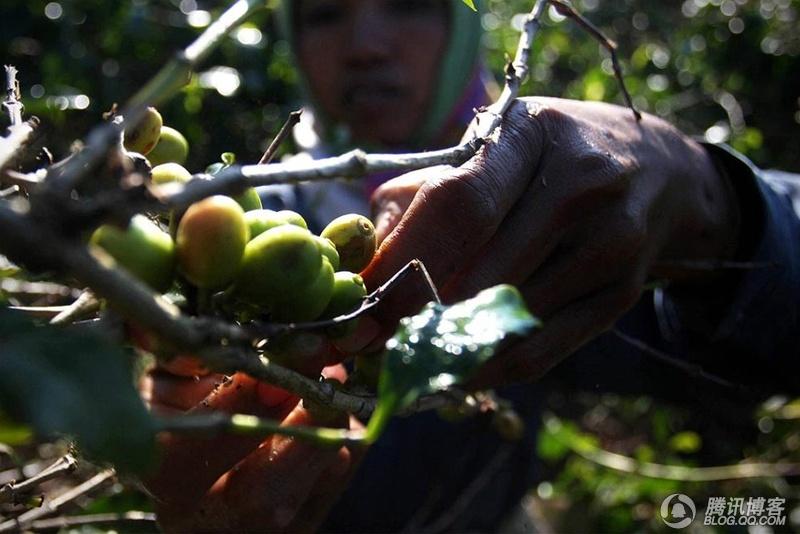
There is also a difference between the coffee beans picked, but those in the hands are not fully mature.
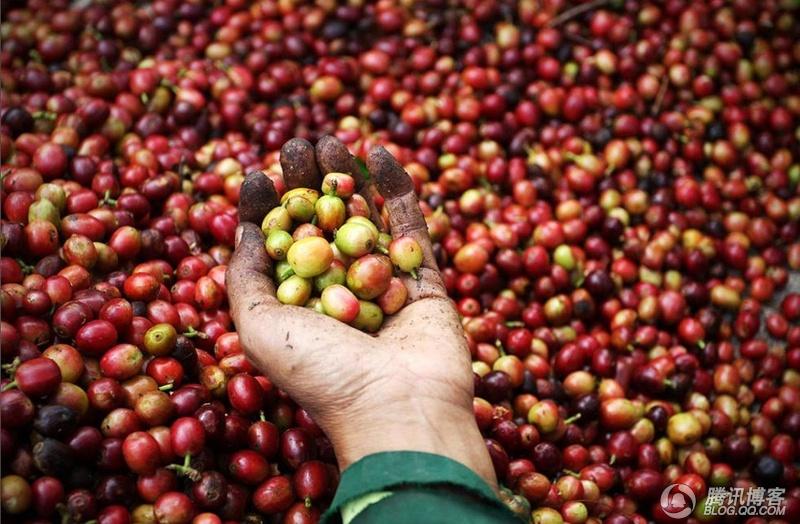
So manual sorting is needed.
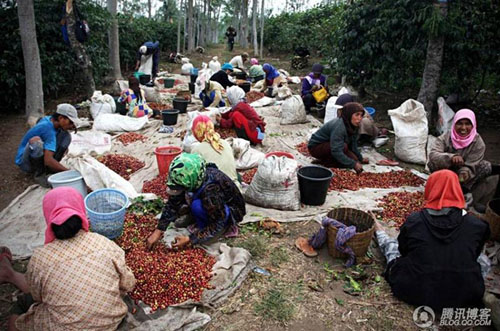
This is the bagged civet cat, which is endemic to the island of Indonesia and belongs to the genus tree-borne civet. At first, the locals hated the raccoons because they often ate the ripe and reddest coffee fruits in the coffee trees.
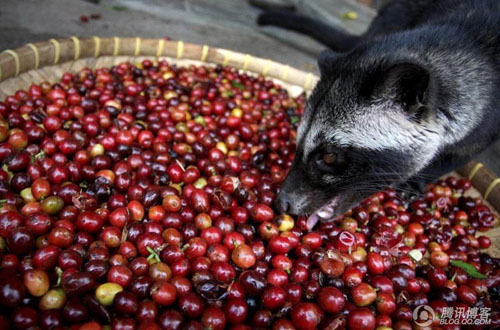
But now the local people let them open to eat coffee fruit, look, a cat a large plate, a lot of cats are eating oh. Whether they are like the squirrels in Charlie's Chocolate Factory, but their role is much more important than squirrels.
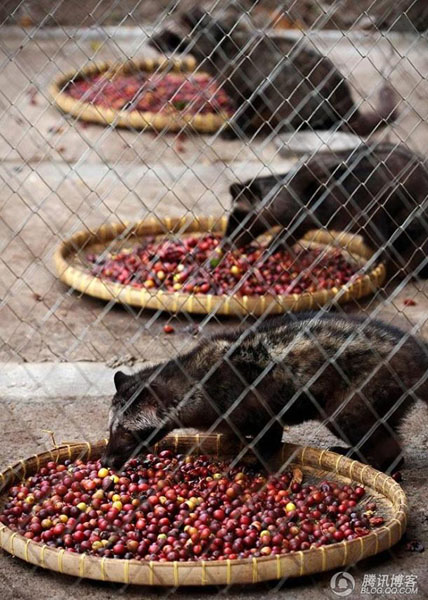
Look at this bunch of coffee beans, let you have a bad association …...
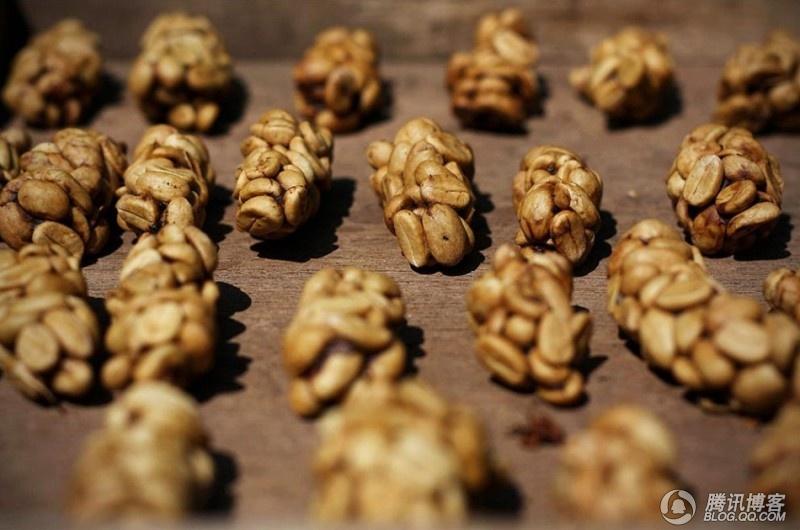
You are right, they are indeed those raccoon cats excreted, undigested coffee seeds. Originally, I do not know who first thought that this kind of animal can eat, digest and defecate. Some are shameless, desperate, or simply because lazy locals pick out more complete beans wrapped in pulp slime from raccoon droppings. Perhaps it is through the fermentation of enzymes in the animal stomach that this kind of coffee bean has a unique flavor.
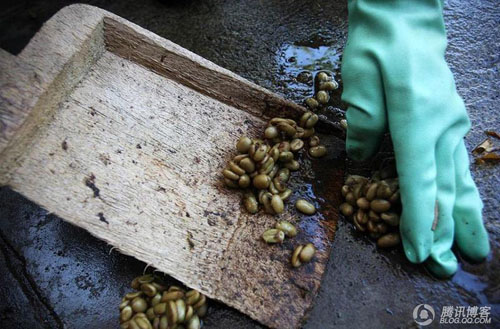
Since they are raccoons' poop, of course they should be carefully cleaned-but raccoons that specialize in coffee fruits also belong to eating fruit, jam and so on, and they must not be too dirty. I'm sorry to turn everyone's stomach. Because the stomach acid and enzymes in the digestive system of raccoons are very different from the fermentation process of coffee with water, the coffee is as thick as syrup.
KOPI LUWAK coffee tastes mellow and lubricated. Coffee as thick as chocolate pulp gives your tongue a long and clear aftertaste.
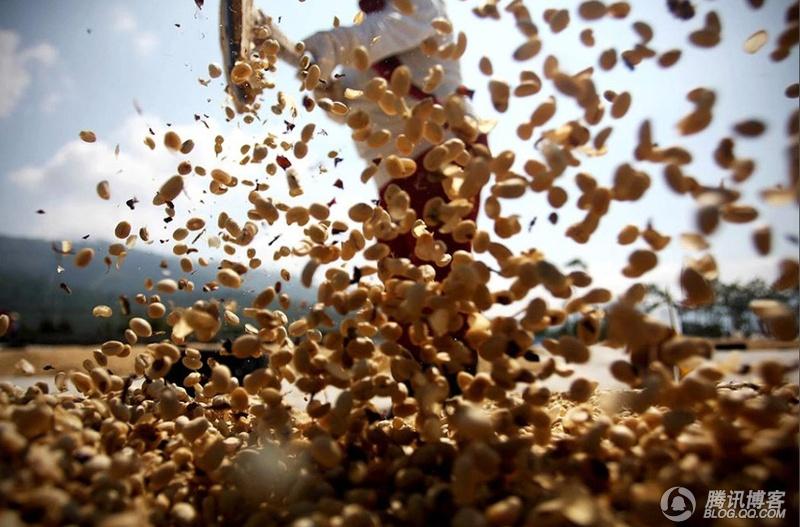
Traditionally, coffee fruit is washed or tanned to remove the peel, pulp and sheep skin, and finally take out the coffee beans. However, Luwak uses the method of natural fermentation in the body to remove the coffee beans, so it has a special flavor. In the mountains of Indonesia, there is a kind of civet named Luwak that likes to eat oar coffee fruit, but the hard coffee seeds cannot be digested. With the excrement, Indonesians find that the coffee beans fermented by civets' intestines and stomach are very thick and mellow, so they collect civets' feces, sift them out, and brew them to drink. Due to the scarcity of production, the price remains high. It was the world's most valuable coffee that first introduced Ruwak coffee to the United States (M.P. Mountanos) pointed out that at first, when I heard about this kind of coffee fermented in the body, I thought it was a joke in the industry, but I didn't take it seriously. it was only when I saw a special report on Ruwak coffee in National Geographic that I became interested in her. it took seven years to find a stable supply and began to introduce a small amount to the United States.
Have you seen the movie bucket list? Morgan Freeman and Jackie Coulson acted in an old show. Jack's old rich man specializes in this kind of expensive coffee. Freeman laughed when he heard about it, because he knew the coffee was collected from the droppings of a raccoon cat. It is a more interesting part in the movie.
Important Notice :
前街咖啡 FrontStreet Coffee has moved to new addredd:
FrontStreet Coffee Address: 315,Donghua East Road,GuangZhou
Tel:020 38364473
- Prev

Unusual Kona Coffee Hawaiian Coffee
Like other parts of the Hawaiian islands, Kona provides ideal climatic conditions for the cultivation of coffee beans. However, the coffee beans produced by Kona are different and have gained a good reputation for coffee all over the world. This is probably due to the fact that Kona Island is rich in volcanic black mud with moderate acidity, rich mineral content and suitable water content. And every afternoon, Cona Island
- Next
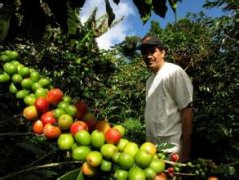
Interpretation of the name of coffee beans Why coffee beans have such a long name?
Why do coffee beans have such a long name? Why is there a single item, deep roast and Italian style of coffee? How is this distinguished? When you walk into a coffee store or open the website of a professional coffee and bean seller, you may be confused by the dazzling variety of coffee names. Why do coffee beans have such a long name? Why is there a single item, deep roast and Italian style of coffee? How is this divided?
Related
- Beginners will see the "Coffee pull flower" guide!
- What is the difference between ice blog purified milk and ordinary milk coffee?
- Why is the Philippines the largest producer of crops in Liberia?
- For coffee extraction, should the fine powder be retained?
- How does extracted espresso fill pressed powder? How much strength does it take to press the powder?
- How to make jasmine cold extract coffee? Is the jasmine + latte good?
- Will this little toy really make the coffee taste better? How does Lily Drip affect coffee extraction?
- Will the action of slapping the filter cup also affect coffee extraction?
- What's the difference between powder-to-water ratio and powder-to-liquid ratio?
- What is the Ethiopian local species? What does it have to do with Heirloom native species?

